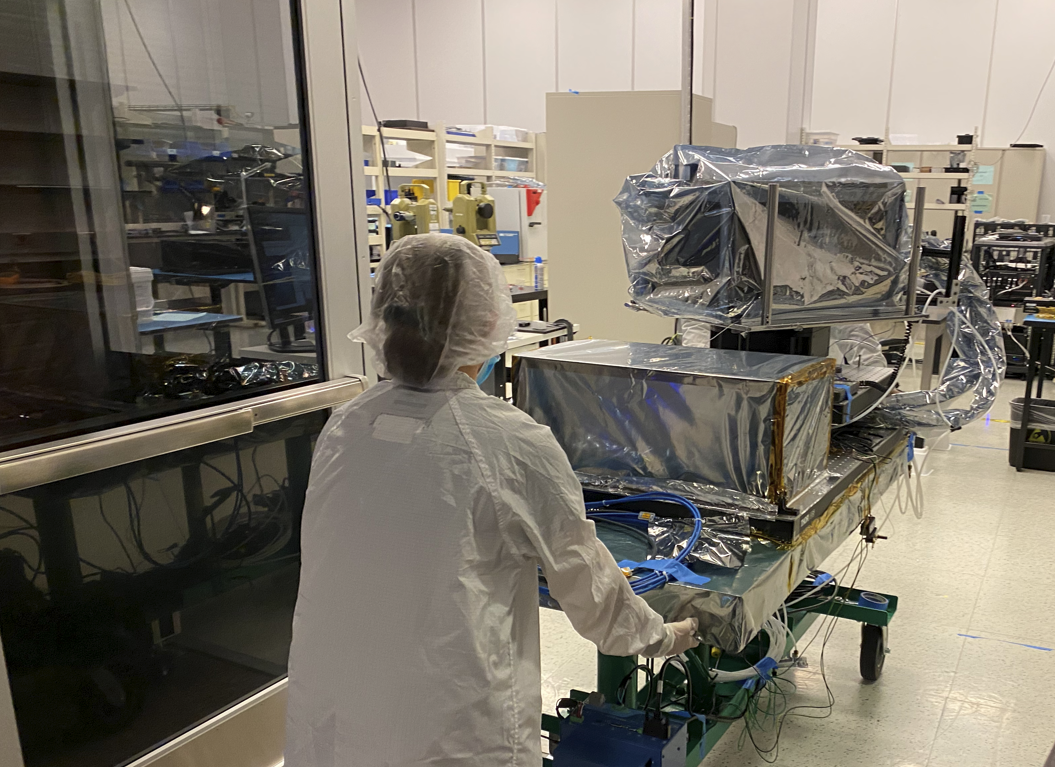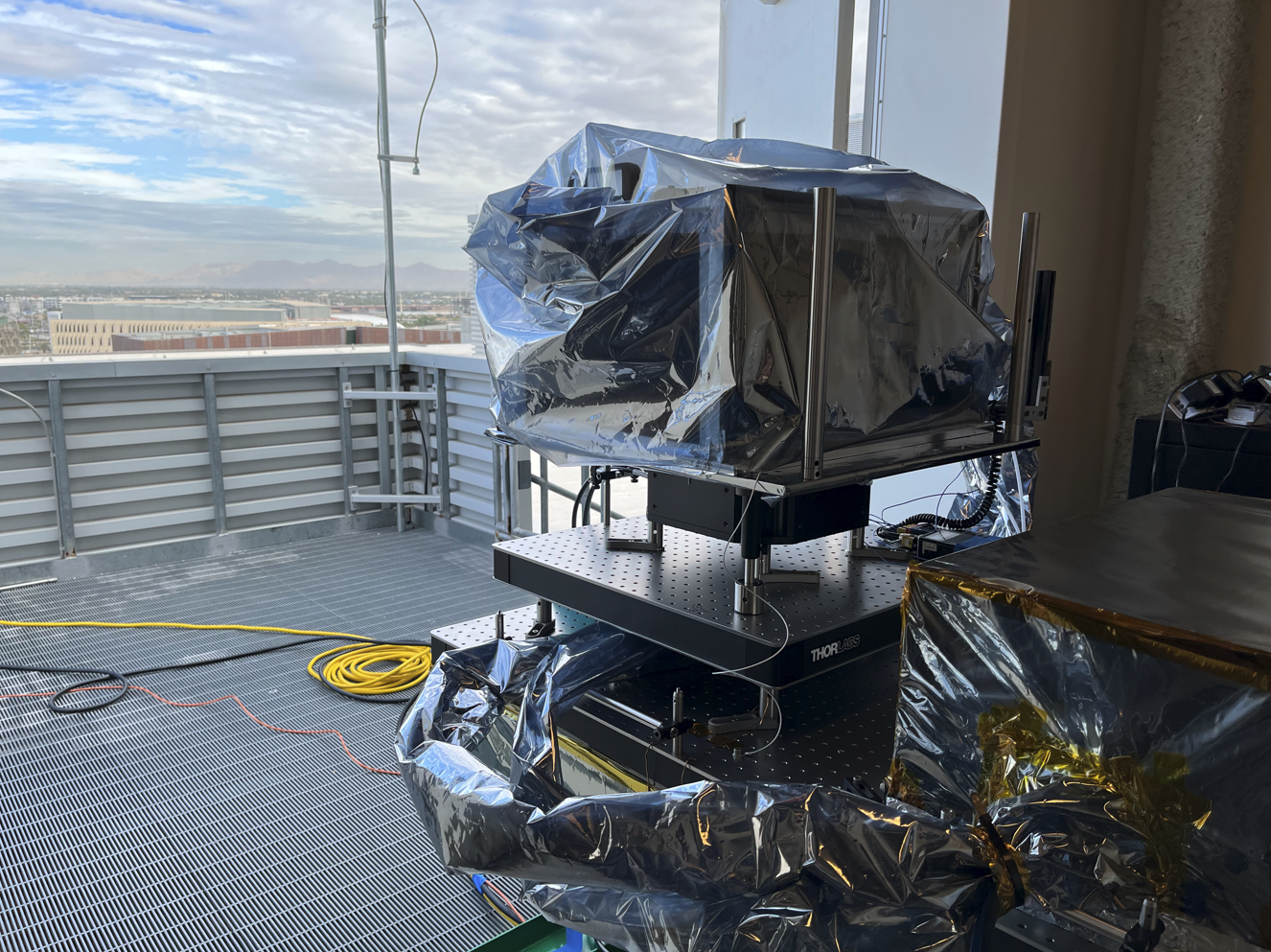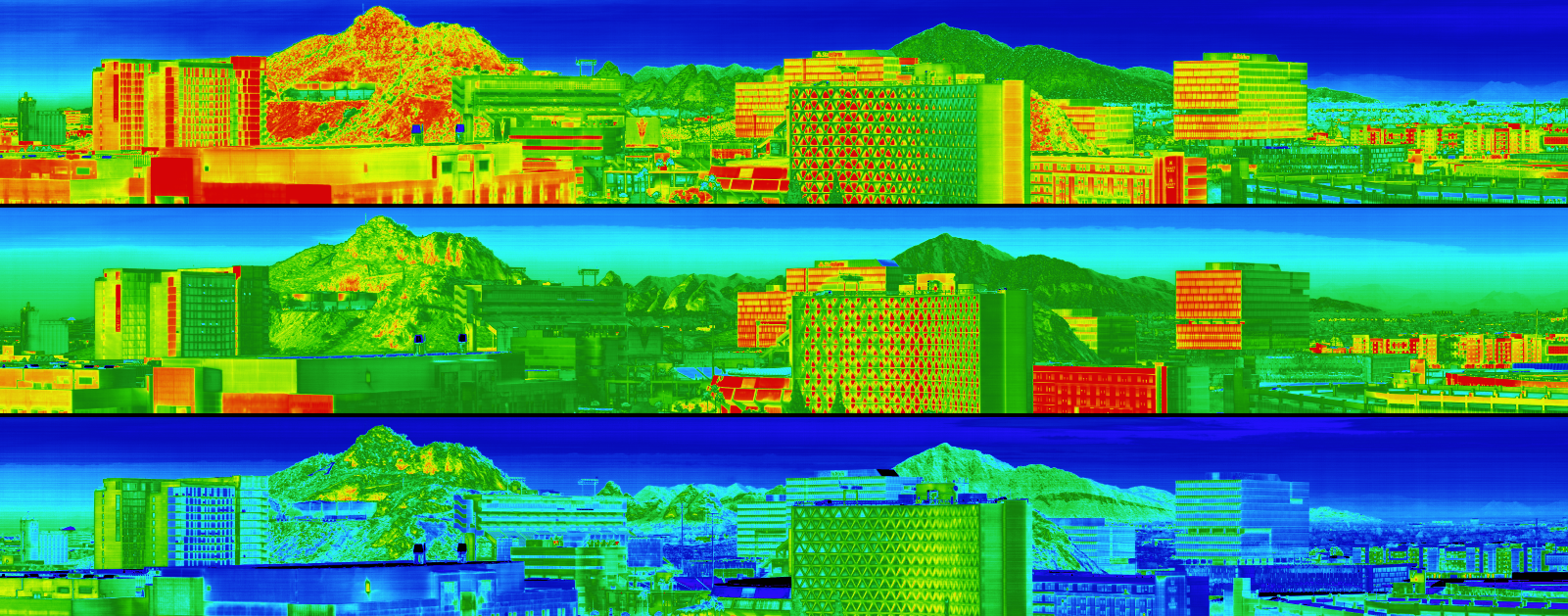ASU scientists and engineers building the Europa Thermal Emission Imaging System (E-THEMIS) for NASA’s Europa Clipper passed a major hurdle recently by capturing the first successful test images from this complex infrared camera, known as “first light” images.
Europa Clipper, a NASA mission to investigate Jupiter's moon Europa, is planned to launch in October 2024 and arrive at Jupiter in 2030. It will study this icy moon through a series of flybys while in orbit around Jupiter to investigate whether it could harbor conditions suitable for life.
E-THEMIS, which is led by Regents Professor Philip Christensen of Arizona State University’s School of Earth and Space Exploration, is an infrared camera designed to map Europa’s temperatures for the mission. These infrared images will help scientists seek clues about Europa’s activity, including regions where Europa’s suspected ocean may be near the surface.
“The surface of Europa is extremely cold, but the ocean underneath is warm, liquid water. If that water is coming near the surface through cracks and vents, E-THEMIS will see these warm regions and tell us where ocean water is closest to the surface,” Christensen said. “Even if water erupted onto the surface many years ago, the ice will still be warm. From these temperature images, E-THEMIS will provide an excellent opportunity to study the geologic activity of Europa.”
The “first light” E-THEMIS camera test images were taken from the rooftop of the Interdisciplinary Science and Technology Building 4 (ISTB4) on the ASU Tempe campus using a specially designed mobile cleanroom laboratory, which kept the camera safe from dust, microbes and aerosol particles.
“Our team spent months developing a portable clean lab to safely transport E-THEMIS to the roof of the building and collect data in a controlled environment,” Christensen said.
One of the most spectacular test images produced from E-THEMIS is a temperature image taken looking north from ISTB4. In stunning detail, the image clearly shows ASU’s Sun Devil Stadium and “A” Mountain, among other recognizable ASU landmarks. It is even possible to read details inside the stadium from the E-THEMIS instrument, based on temperature differences sensed from about 1.1 km (0.7 miles) away.
Looking north from ISTB4, this E-THEMIS temperature image shows ASU’s Sun Devil Stadium and “A” Mountain, among other recognizable ASU landmarks. Image credit: NASA/JPL-Caltech/ASU
View the full resolution image
“The instrument worked beautifully and is in excellent focus,” Christensen said.
During this test, the E‑THEMIS team also collected temperature images throughout the afternoon and early evening. When displayed in color, these images reveal how the temperature changes as evening approaches. The red, orange and yellow colors in the images indicate warmer temperatures due to heat and the infrared radiation being emitted. The purples and dark blues indicate cooler temperatures, with less heat and infrared radiation emitted.
While the temperatures are approximations during this testing phase, the progression of cooler colors (purples and blues) from afternoon to evening in the three images, acquired at 12:40 p.m., 4:40 p.m. and 6:20 p.m., after sunset, illustrate how the infrared camera detected surface temperatures transitioning from warmer in the afternoon to cooler after sunset.
E-THEMIS temperature color image from the “first light” test, taken from the rooftop of ISTB4 on the ASU Tempe campus. The top image was acquired at 12:40 p.m., the middle at 4:40 p.m. and the bottom image at 6:20 p.m. (after sunset). Temperatures are approximations during this testing phase. Image credit: NASA/JPL-Caltech/ASU
With this successful “first light” testing of E-THEMIS, the next step for the team is to begin the environmental testing to ensure that E-THEMIS will survive launch and operate as intended in space.
“Launch is one of the most stressful periods for any spacecraft or instrument, and we want to make sure E-THEMIS will survive, so we will put it through a rigorous set of vibration tests to simulate the launch conditions,” Christensen said. “We will also test it in a vacuum chamber to make sure it will work properly in the vacuum of space.”
And until at least late March 2022, visitors to the Gallery of Scientific Exploration on the first floor of ISTB4 can watch the E-THEMIS team hard at work in ASU’s cleanrooms. In addition to Christensen, the engineering team includes Greg Mehall, Saadat Anwar, Heather Bowles, Courtnie Besich, Zoltan Farkas, Andrew Holmes, Ian Kubic, Edgar Madril, Bill O’Donnell, Carlos Ortiz, Dan Pelham, Mehul Patel, Sarah Rogers and Rob Woodward.
In the coming months, they will continue their testing of this instrument before it leaves ASU and is shipped to NASA’s Jet Propulsion Laboratory for integration into the Europa Clipper spacecraft.
More about the mission
Missions such as Europa Clipper contribute to the field of astrobiology, the interdisciplinary research on the variables and conditions of distant worlds that could harbor life as we know it. While Europa Clipper is not a life-detection mission, it will conduct detailed reconnaissance of Europa and investigate whether the icy moon, with its subsurface ocean, has the capability to support life. Understanding Europa’s habitability will help scientists better understand how life developed on Earth and the potential for finding life beyond our planet.
Managed by Caltech in Pasadena, California, NASA’s Jet Propulsion Laboratory leads the development of the Europa Clipper mission in partnership with the Johns Hopkins Applied Physics Laboratory in Laurel, Maryland, for NASA’s Science Mission Directorate in Washington, D.C. The Planetary Missions Program Office at NASA’s Marshall Space Flight Center in Huntsville, Alabama, executes program management of the Europa Clipper mission.
More information about Europa can be found at europa.nasa.gov.
More Science and technology

Breakthrough copper alloy achieves unprecedented high-temperature performance
A team of researchers from Arizona State University, the U.S. Army Research Laboratory, Lehigh University and Louisiana State University has developed a groundbreaking high-temperature copper alloy…

4 ASU researchers named senior members of the National Academy of Inventors
The National Academy of Inventors recently named four Arizona State University researchers as senior members to the prestigious organization.Professor Qiang Chen and associate professors Matthew…

Transforming Arizona’s highways for a smoother drive
Imagine you’re driving down a smooth stretch of road. Your tires have firm traction. There are no potholes you need to swerve to avoid. Your suspension feels responsive. You’re relaxed and focused on…






